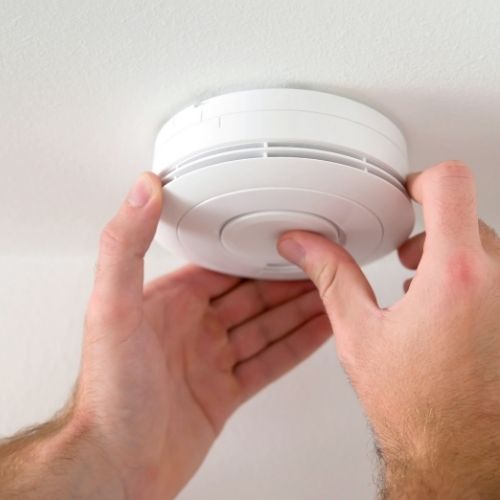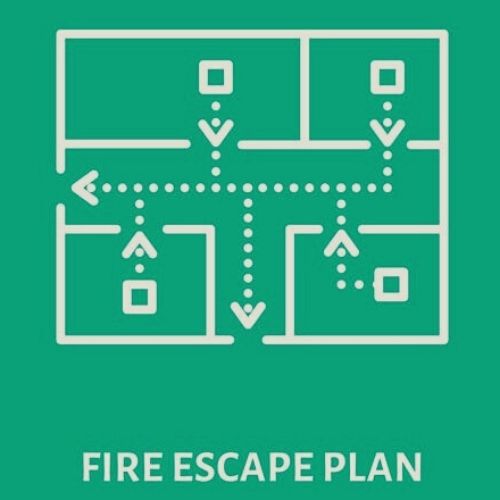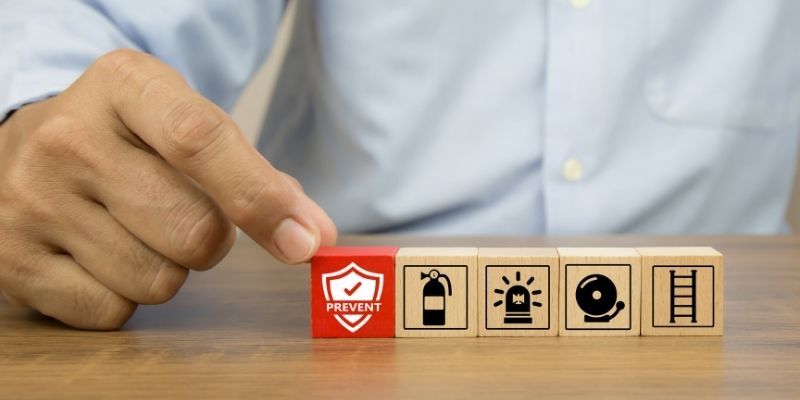As parents, we always care about how to raise our family and provide for their needs. Moreover, we ensure the health and safety of our loved ones. Likewise, firefighters tell everyone that buildings, furniture, and cars can all be replaced — but family members cannot. Here are things that first responders wish every family knew about fire prevention. For a fire-safe family, here are tips for you.
Tips For a Fire-Safe Family
Smoke Detectors Save Lives

All fires are different. Therefore, they can start unexpectedly and smolder quietly for minutes or erupt into flames instantly.
Because smoldering fires and flaming fires produce different kinds of smoke, it would be smart to install a dual-sensor smoke alarm.
In addition, these alarms use photoelectric technology to detect smoldering fires and ionization technology to detect flaming fires.
Test your smoke detectors monthly.
If they use 9-volt batteries, switch the batteries for fresh ones every six months.
Stay in the Kitchen While You’re Cooking
Most house fires originate in the kitchen when cooking is left unattended. Therefore, you must remain in the kitchen while you’re cooking meals.
If you leave the room, then, you risk getting distracted and forgetting about what’s on the stove.
Also, keep oven mitts, dish towels, and food packaging away from the stovetop.
In the event of a pan fire, quickly cover the pan with a lid to smother the fire.
Keep Fire Extinguishers Easily Accessible
Fire extinguishers are suited for small fires. So, keep extinguishers within reach and ensure family members know how to use them. And keep in mind, the acronym for using an extinguisher is PASS which means;
- Pull the pin.
- Aim the extinguisher.
- Squeeze the handle.
- Sweep the extinguisher’s aim from side to side.
After years of non-use, fire extinguishers can expire. Thus, read the label and replace it with a new extinguisher when needed.
On some occasions, fire station personnel can sometimes accept expired extinguishers. However, if they do not, contact your local HHW (household hazardous waste) collection site manager.
Similar to a fire extinguisher, a fire blanket is designed to put out a small contained fire.

They are made of fire-retardant material and work by smothering fires. So, they require people to stand closer to the fire than if you were to use an extinguisher.
Remember, you are not a trained firefighter. If a fire cannot be extinguished within seconds, leave the building and call 911 immediately.
Fire Escape Plan Tips For a Fire-Safe Family
Make a Fire Escape Plan

- Firstly, create a floor plan for each level of your house and post it in every room. Draw it by hand or use a template available online. Save a digital copy to your phone to show to first responders.
- Secondly, from every room, determine at least two ways to escape. Take into consideration windows that might be locked or too high for children to reach.
- Thirdly, keep paths throughout your house clear.
- In addition, designate a meeting place outside, where everyone will gather. First responders will ask you if there’s anyone in the building. It’s up to you to know the answer so that you don’t risk their lives.
- Moreover, do not go back inside the structure after getting everyone out. Let first responders know if any occupants or pets are inside. Unlike you, firefighters are trained and equipped to fight fires. They will work their hardest to save lives.
Practice Your Fire Escape Plan
In cases of emergency, some people might freeze with panic and fright.
Children have been known to hide from fires in closets and under beds, where they may succumb to smoke inhalation.
You want to escape fire to be second nature, done automatically without hesitation, so practice your fire escape plan regularly.
Stay Near the Floor to Get Out the Door
During a fire, the air will be less smoky near the ground. When you practice your fire escape plan drills, perform the actions as though there was a real fire — and stay near the floor.
Close Bedroom Doors at Night
At bedtime, close all bedroom doors. If a fire were to start in the middle of the night, a closed-door will help keep fire and smoke from entering that bedroom.
Check Doors and Knobs for Heat Before Opening
If you hear a smoke detector, use the back of your hand to sense the temperature of the door and knob.
But when they’re cool, open the door with caution to exit quickly.
If the door and knob feel hot, it’s likely that fire is nearby. A different exit route — perhaps through a window — might be required.
If you have children:
Some young children are sound sleepers. Don’t assume the sound of a smoke alarm will rouse them and, if they do wake up, don’t expect them to have the wherewithal to escape a fire by themselves.
As you determine your fire escape plan, make it clear who will be responsible to remove each child from the premises and get them to your meeting point.
If you have pets:
Keep extra leashes near each door that leads outside, including doors that you don’t typically use for daily walks. Make sure all pets are microchipped and wear collars with identification.
Frightened pets might run away but could still be found days, weeks or months later. Be certain they can be identified as your pet.

To Sum Up
When it comes to fire prevention, you need to be prepared to stay safe. If you have learned from these tips, then you could also share this with those you know. Help others to have a fire-safe family.
Check out our recent post about How To Design A Perfect Kids’ Room.
Benjamin Hadlock is Vice President of BlowHard Fans, an innovator in industrial fans for firefighters. For more than a decade, Hadlock has been a driving force in BlowHard Fans’ strategic journey in research and quantification of fan performance as part of product development. He has been instrumental in relationship building and information sharing within the industry.





